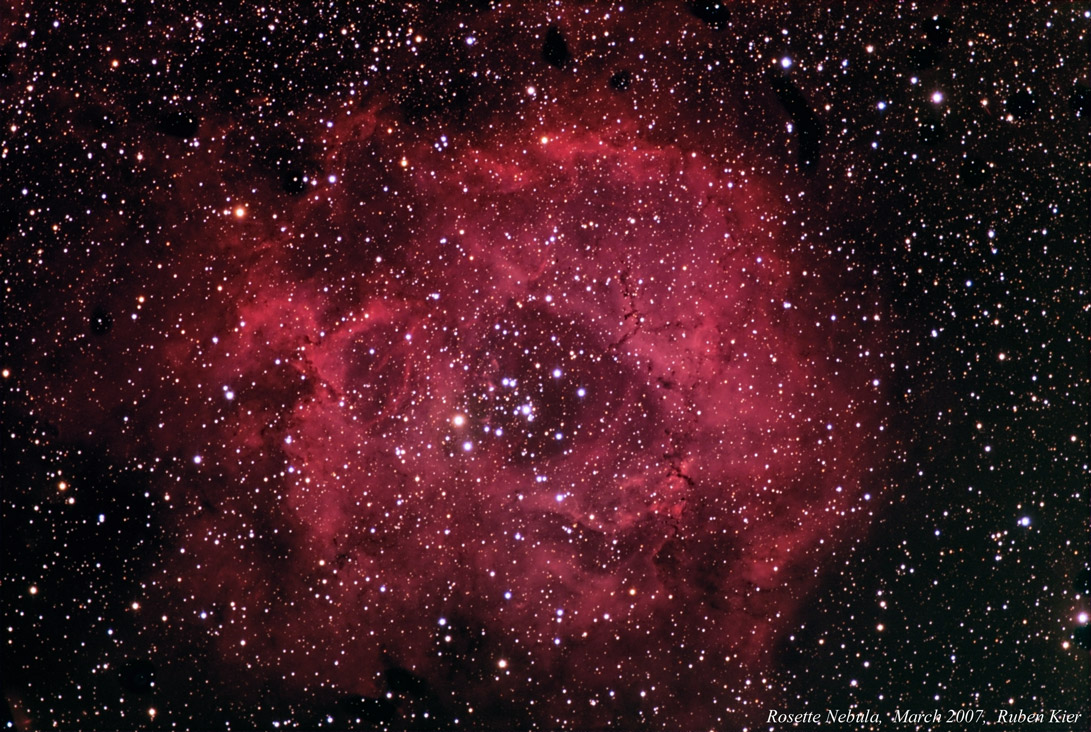| Rosette Nebula |
The Rosette Nebula is barely visible through any telescope, because it is so faint and spread out. Its shape and features are only revealed through the
eye of the camera with long exposures. Telescopes will show a cluster of bright young stars that can be seen in the center of this image. Ultraviolet light
from these central suns excites the surrounding gas from which these stars were born. Darker areas in the glowing nebula, best seen in the bottom right of
the image, represent "Bok Globules." Bok Globules are denser clouds of dust and gas that may be precursors of new solar systems! The Rosette
Nebula lies at a distance of 4900 light years in the faint constellation Monoceros, next to Orion.
The image above was obtained from the Hidden Lake Observatory, on a windy night, through a Takahashi Sky 90 refractor with a Tak redurcer yielding
a focal length of 405 mm. I combined 20 red, 14 green, and 13 blue 3-minute exposures, all unbinned, through an ST10XME camera. The red
exposures were used for luminance and for the red channel.
The image below was taken from my suburban backyard using a red filter for 47 luminance exposures of 2 minutes each. This was combined with 12
red, 12 green, and 15 blue 2-minute exposures, for a total imaging time of almost three hours. I used a 4" refractor with a 0.75x reducer, and an
ST10-XME camera.
eye of the camera with long exposures. Telescopes will show a cluster of bright young stars that can be seen in the center of this image. Ultraviolet light
from these central suns excites the surrounding gas from which these stars were born. Darker areas in the glowing nebula, best seen in the bottom right of
the image, represent "Bok Globules." Bok Globules are denser clouds of dust and gas that may be precursors of new solar systems! The Rosette
Nebula lies at a distance of 4900 light years in the faint constellation Monoceros, next to Orion.
The image above was obtained from the Hidden Lake Observatory, on a windy night, through a Takahashi Sky 90 refractor with a Tak redurcer yielding
a focal length of 405 mm. I combined 20 red, 14 green, and 13 blue 3-minute exposures, all unbinned, through an ST10XME camera. The red
exposures were used for luminance and for the red channel.
The image below was taken from my suburban backyard using a red filter for 47 luminance exposures of 2 minutes each. This was combined with 12
red, 12 green, and 15 blue 2-minute exposures, for a total imaging time of almost three hours. I used a 4" refractor with a 0.75x reducer, and an
ST10-XME camera.

music - Hey Jude, Beatles
